Formula C9H21O3Al Molar mass 204.25 g/mol | Density 1.04 g/cm³ Appearance white solid | |
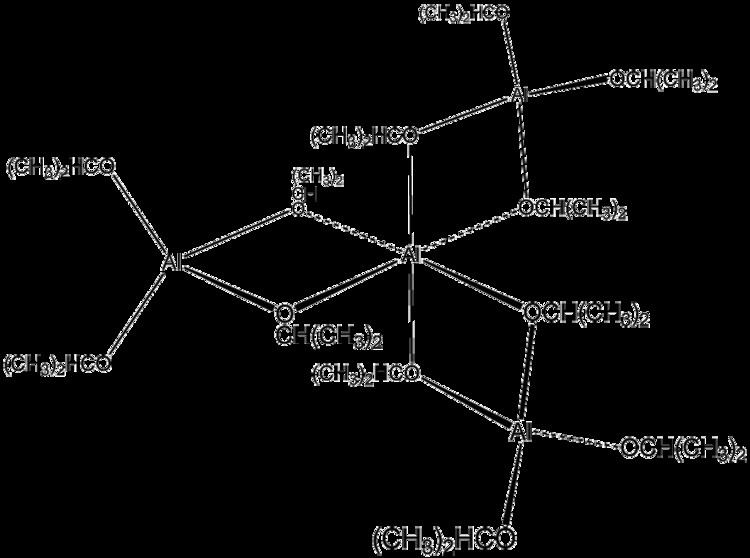 | ||
Synthesis of aluminium isopropoxide
Aluminium isopropoxide is the chemical compound usually described with the formula Al(O-i-Pr)3, where i-Pr is the isopropyl group (CH(CH3)2). This colourless solid is a useful reagent in organic synthesis. The structure of this compound is complex, possibly time-dependent, and may depend on solvent.
Contents
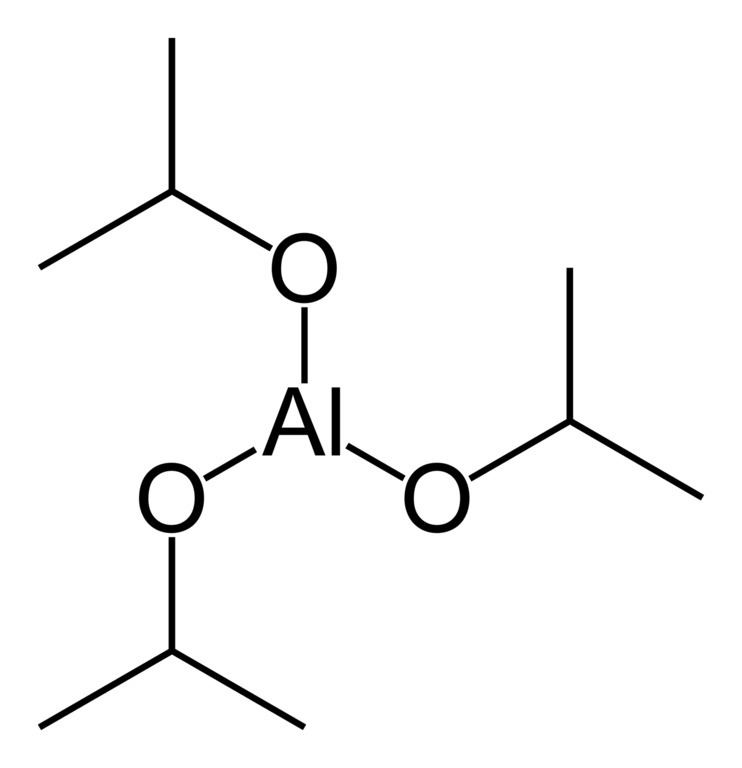
Structure
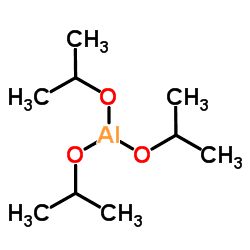
The structure of the metal alkoxides are often complex and aluminium isopropoxide is no exception. The complexity is also reflected in the disputed melting point for the material which could reflect the presence of trace impurities, such as water, slow oligomerisation ("aging") or both. For aluminium isopropoxide this phenomenon is mainly due to the trimer-tetramer transformation described in detail in the early works by Turova et al. The tetrameric structure of the solid crystalline material was verified by NMR spectroscopy and X-ray crystallography. The species is described by the formula Al[[(μ-O-i-Pr)2Al(O-i-Pr)2]]3. The unique central Al is octahedral surrounded by three bidentate "[[Al(O-i-Pr)4]]−" ligands, each featuring tetrahedral Al. The idealised point group symmetry is D3.
The tert-butoxide is a dimer with the formula Al2(μ-O-t-Bu)2(O-t-Bu)4 It is prepared analogously to the isopropoxide.
Preparation
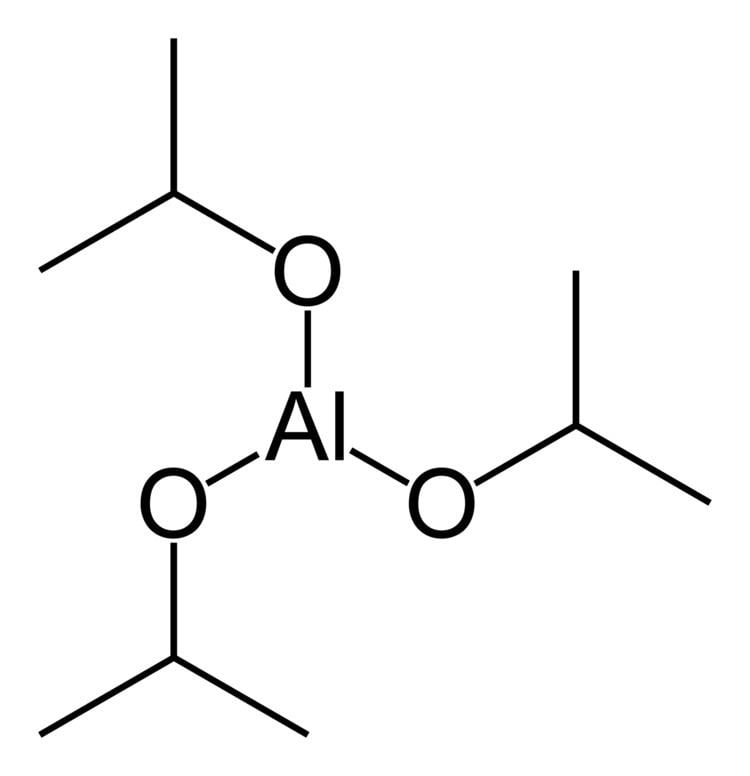
This compound is commercially available. Industrially, it is prepared by the reaction between isopropyl alcohol and aluminium metal, or aluminium trichloride:
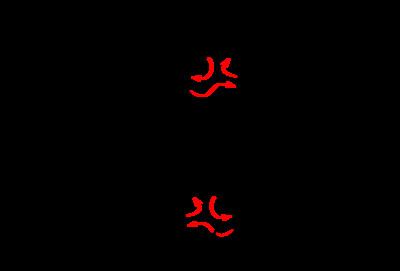
Using aluminium metal, an older process uses a mercury catalyst (see below), whereas a more recent process does not.
In the laboratory, a widely accepted method for preparing aluminium isopropoxide was published in 1936 by Young, Hartung, and Crossley. Their procedure entails heating a mixture of 100 g of aluminium, 1200 mL of isopropyl alcohol, and 5 g of mercuric chloride at reflux. The process occurs via the formation of an amalgam of the aluminium. A catalytic amount of iodine is sometimes added to initiate the reaction, which can be quite vigorous. Young et al. achieved an 85–90% yield, after purification by distillation at 140–150 °C (5 mm Hg).
Reactions
In a MPV reduction, ketones and aldehydes are reduced to alcohols concomitant with the formation of acetone. This reduction relies on an equilibrium process, hence it produces the thermodynamic product. Conversely, in the Oppenauer Oxidation, secondary alcohols are converted to ketones, and homoallylic alcohols are converted to α,β-unsaturated carbonyls. In these reactions, it is assumed that the tetrameric cluster disagregates.
Being a basic alkoxide, Al(O-i-Pr)3 has been also investigated as a catalyst for ring opening polymerization of cyclic esters.
History
Aluminium isopropoxide was first reported in the master's thesis of the Russian organic chemist Vyacheslav Evgen'evich Tishchenko (Вячеслав Евгеньевич Тищенко, 1861–1941), which was reprinted in the Journal of the Russian Physico-Chemical Society (Журнал Русского Физико-Химического Общества) of 1899. This contribution included a detailed description of its synthesis, its peculiar physico-chemical behavior, and its catalytic activity in the Tishchenko reaction (catalytic transformation of aldehydes into esters). It was later found also to display catalytic activity as a reducing agent by Meerwein and Schmidt in the Meerwein-Ponndorf-Verley reduction ("MPV") in 1925. The reverse of the MPV reaction, oxidation of an alcohol to a ketone, is termed the Oppenauer oxidation. The original Oppenauer oxidation employed aluminium butoxide in place of the isoproxide.
